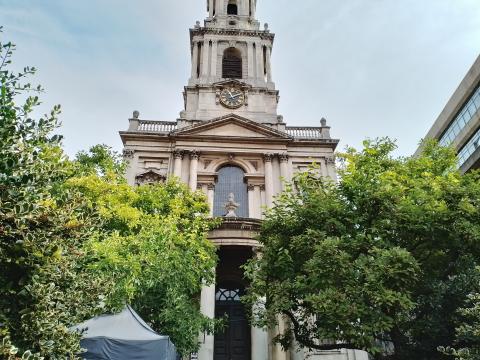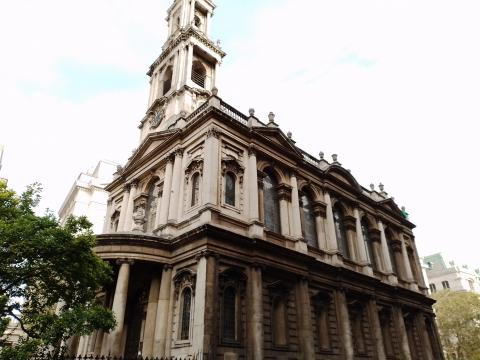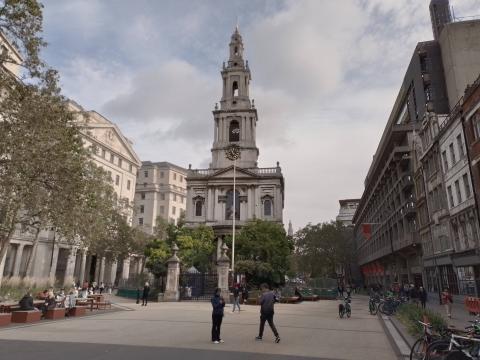St Mary le Strand

Simon Jenkins describes the church of St Mary le Strand as “…the finest eighteenth century church in London” in his seminal England’s Thousand Best Churches. There is plenty of competition for this accolade, but Mr Jenkins, as usual, only offers praise with justification. It has a rather florid, Baroque exterior, and was built to replace an older church which had been destroyed in 1549 by the Duke of Somerset when he was building Somerset House. Sadly, it took 150 years for the promised replacement to rise from the ground. Although the Duke was an evangelical protestant in those heady days of Reformation, I always marvel at the boldness of the rich to play games with God’s Acre.

The second curious fact is its patrons’ insistence that a statue of Queen Anne be located a short distance away. When the poor woman died in 1714, the project was quickly dropped, but the stone for the monument had already been purchased and had been delivered to the site. Gibbs, the church’s architect, was ordered to make use of it by building a steeple, a feature not in his original design. The church was therefore directly affected by the a monarch’s death; her passing dispensed with the need for a statue and altered the church's appearance. Yet the broader church of God was created by the death of a greater Monarch, who still lives and in whose service she is found.

The third interesting fact is its survival. Although this part of central London was a favourite target of Nazi bombs, the church was spared the destruction of surrounding buildings. God, in His providence, saved this great building. Why it was not rescued from the Duke of Somerset’s pride as it was from foreign aggression, I cannot say. Sometimes, the Lord’s people are spared affliction; other times, His providence permits their suffering. So deep are the counsels of God!
One church, three lessons.

- Log in to post comments


 Sunday Worship 10.45am & 6.00pm
Sunday Worship 10.45am & 6.00pm